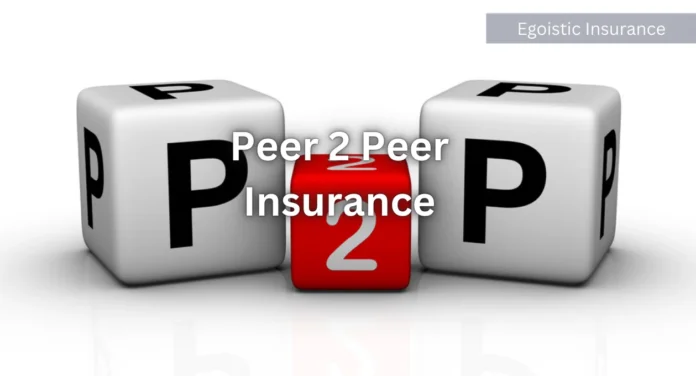Insurance has increasingly being challenged by innovative concepts like Peer-to-Peer insurance. It is transforming the industry by leveraging technology and social connectivity to create more transparent, affordable, and user-centric. In this blog, we’ll explore various facets of Peer to peer insurance, from models and platforms to the role of blockchain and insurtech innovations.
One of the most significant advantages is its ability to foster a sense of community among participants. By pooling resources together, members can actively support one another during claims, rather than relying solely on a large company. This model not only enhances trust but can also lead to lower premiums, as less money is spent on administrative costs and profit margins. As more people recognize the benefits of collaborative risk management.
Peer-to-Peer Insurance
Peer-to-Peer is a model where a group of individuals pool their premiums together to insure against risks, effectively cutting out the middleman—the traditional company. This model aims to reduce costs, increase transparency, and align the interests of policyholders.
The rise of technology has played a significant role in the evolution. Digital platforms facilitate the seamless collection of premiums and the management of claims, ensuring a smooth experience for users. Moreover, the use of social media and online communities fosters stronger connections among members, promoting trust and collaboration. As these technological advancements continue to develop, they will likely enhance the efficiency.
P2P Insurance Models
Models vary, but they generally involve small groups of people with similar risk profiles who come together to insure each other. Claims are paid from the pooled funds, and any remaining money is often redistributed among the group or used to lower premiums for the next period.
In addition to fostering community among participants encourages a proactive approach to risk management. Members are more likely to engage in safer behaviours and preventive measures, knowing they are financially connected with one another. This collective responsibility can lead to healthier lifestyles and safer living environments, ultimately reducing the likelihood of claims its emphasis on collaboration and accountability may reshape how individuals view both risk.
Mutual Insurance Platforms
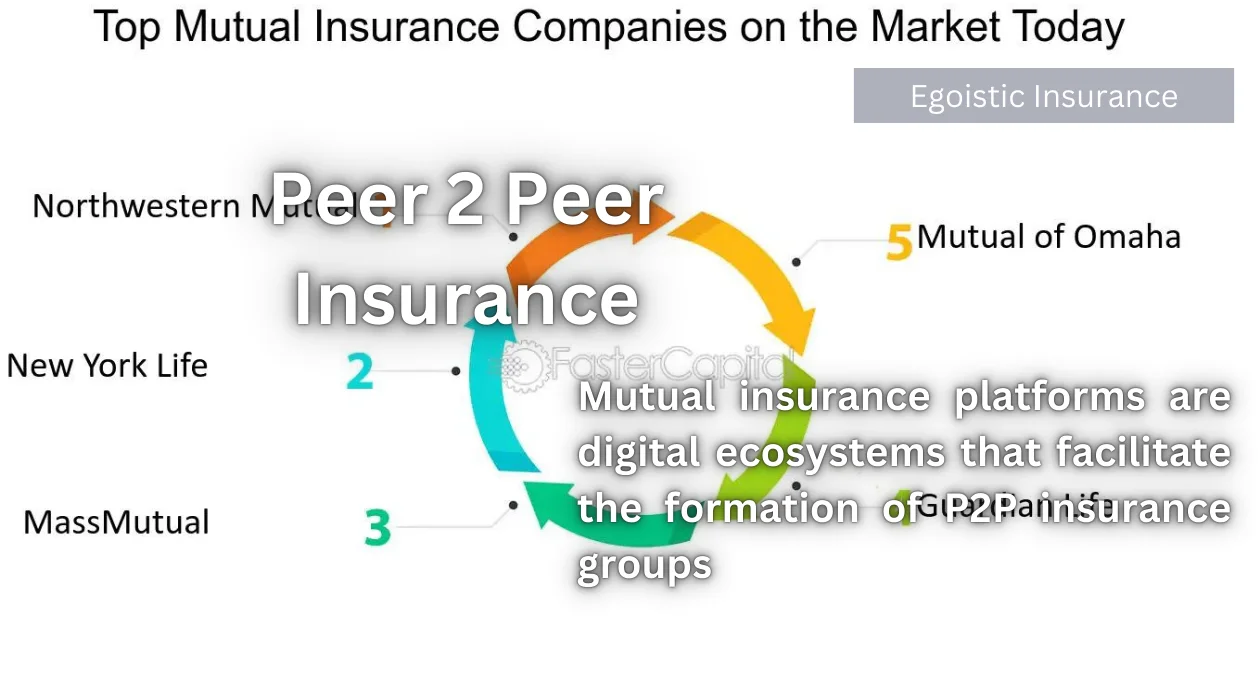
Mutual platforms are digital ecosystems that facilitate the formation of insurance groups. These platforms use advanced algorithms to match individuals with similar risk profiles and manage the collective funds and claims processes efficiently.
As insurance continues to gain traction, the potential for customization becomes increasingly apparent. Participants can tailor their insurance coverage to fit their unique needs, ensuring that they are only paying for what they truly require. This bespoke approach not only empowers members but also enhances overall satisfaction, as individuals can feel more in control of their financial security. Consequently, this model encourages greater engagement and retention among policyholders, signalling a promising shift in the insurance landscape.
Crowdsourced Insurance
Crowdsourced insurance relies on the collective power of individuals to finance. By pooling resources, participants can access better rates and coverage options than they might be able to secure individually.
This collaborative approach not only disrupts traditional insurance models but also empowers members to take active roles in their coverage. By sharing claims experiences and leveraging technology, participants can create a more resilient safety net that reflects their collective values. Enhanced transparency in the claims process helps build trust, as members know their funds are being managed ethically. As continues to evolve, it offers the promise of a more inclusive and community-driven financial solution.
Insurance Sharing Economy
The economy is an extension of the broader sharing economy, where assets and services are shared among individuals. In this context, products and risk are shared among a group, reducing costs and improving access.
As the landscape continues to shift towards models, it’s essential to consider the regulatory implications that come with these innovations. Ensuring compliance with existing laws while fostering an environment conducive to insurance growth can be challenging. Regulators will need to adapt their approaches to accommodate the unique structures of groups while protecting consumers. This balance will be crucial in building trust and ensuring the long-term sustainability of these collaborative solutions.
Blockchain Insurance
Blockchain technology plays a significant role in P2P by enhancing transparency and trust. Blockchain ensures that all transactions and claims are recorded immutably, making fraud detection easier and building trust among participants.
As the industry embraces, education and awareness will be key to driving adoption. Consumers need to understand how these innovative solutions differ from traditional and the benefits they offer. Establishing clear communication channels and providing resources will empower individuals to make informed decisions regarding their coverage. This shift towards collaborative models could significantly reshape consumer expectations and foster a more engaged and supportive community.
Digital Insurance Communities
Digital communities are online groups where members can discuss, review, and manage their policies collectively. These communities often form the basis for P2P groups, fostering a sense of solidarity and mutual support.
In addition to enhancing community engagement, digital communities can facilitate knowledge-sharing among members. Participants can exchange tips on risk management, stay informed about industry changes, and learn from each other’s experiences with claims. This ongoing dialogue not only builds trust but also empowers individuals to make better decisions regarding their coverage. As digital platforms evolve, these communities may become vital resources in navigating the complexities.
Insurtech Innovations
Insurtech innovations are technological advancements that revolutionize the industry. From AI-driven underwriting to smart contracts on blockchain, these innovations streamline processes, reduce costs, and improve customer experiences.
One of the most significant advantages of insurtech innovations is the ability to provide real-time data analytics, which enhances risk assessment and pricing models. By leveraging data from wearable devices, IoT sensors, and other technologies, insurers can offer more accurate premiums that truly reflect an individual’s risk profile. This tailored approach not only helps in cost reduction but also incentivises healthier behaviours, potentially leading to a decrease in claims over time. As these technologies continue to mature.
Collaborative Insurance
Collaborative involves cooperation among a group of individuals to manage and mitigate risk. By working together, members can reduce costs, enhance coverage, and create a more responsive.
This collaborative insurance model also fosters a sense of community among participants, as they pool their resources and share risks. Members often feel more invested in each other’s well-being, leading to increased support and communication within the group. By leveraging collective knowledge and experiences, participants can make informed decisions about managing their risks and claims. Ultimately, this approach not only enhances financial security but also strengthens the bonds between members, creating a more resilient network.
Insurance Risk Pooling
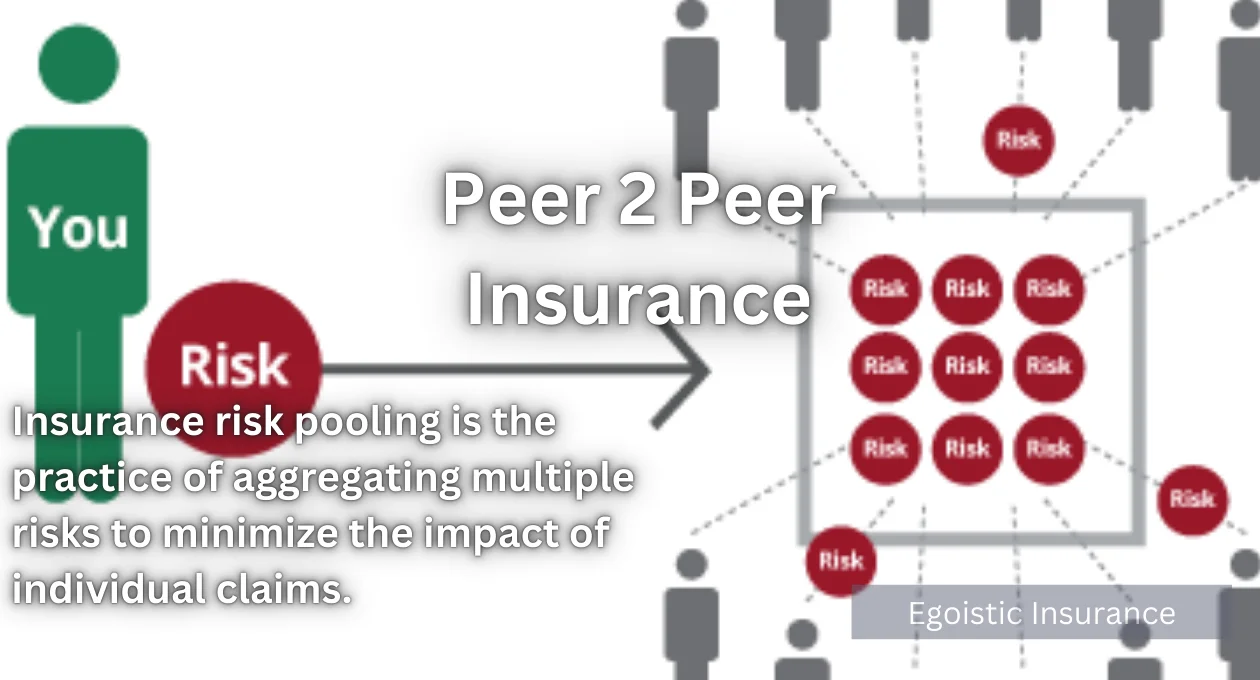
Insurance risk pooling is the practice of aggregating multiple risks to minimize the impact of individual claims. In risk pooling allows members to share the financial burden of claims, reducing overall costs and providing stability.
By fostering a culture of transparency and collaboration can redefine how individuals perceive and engage with their coverage. As members share their insights and experiences, they contribute to a collective intelligence that enhances risk assessment and management strategies. This interconnectedness not only leads to more tailored insurance solutions but also promotes accountability and trust among participants. In essence, the success of insurance hinges on the strength of these relationships, which empower members to actively shape their financial futures.
P2P Insurance Networks
The networks are interconnected groups of individuals who share risk and resources. These networks leverage social connections and technology to create a robust.
As networks continue to evolve, the importance of member engagement becomes increasingly evident. By fostering a proactive environment where participants feel empowered to contribute, these networks can enhance their effectiveness and sustainability. Regular communication, feedback mechanisms, and opportunities for collaboration are essential in cultivating a vibrant community.
Decentralized Insurance
Decentralized removes the need for a central authority, relying instead on smart contracts and blockchain technology to manage policies and claims. This approach enhances transparency, reduces costs, and empowers policyholders.
Decentralized insurance also promotes greater autonomy for policyholders, allowing them to have more control over their coverage and claims processes. By eliminating intermediaries, participants can benefit from faster transactions, lower fees, and a more straightforward claims experience. This shift towards a user-centric approach not only improves customer satisfaction but also builds trust within the community.
Social Insurance Platforms
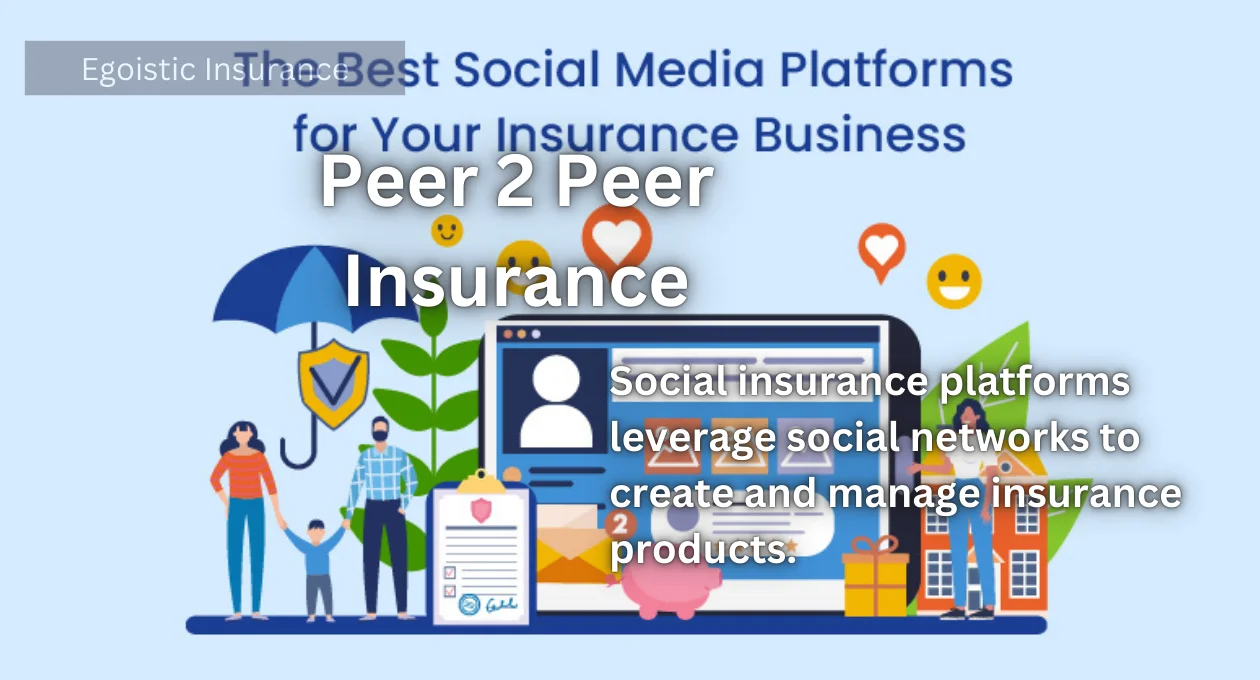
Social platforms leverage social networks to create and manage products. These platforms enable users to form groups based on trust and mutual interests, facilitating more personalized and efficient insurance solutions.
In addition to fostering community and trust, social insurance platforms offer a unique opportunity for continuous improvement in coverage options. By actively participating in discussions about their needs and preferences, users can influence the development of insurance products that are more aligned with their lifestyles. This level of engagement not only enhances customer satisfaction but can also lead to innovative solutions tailored to meet the evolving demands of the insured community.
Peer Insurance Group
A peer group is a small, self-managed collective of individuals who share similar risks. These groups operate independently, managing their own funds and claims, often with the support of digital platforms and smart contracts.
The peer group model empowers members to take an active role in their journey, fostering a sense of ownership and accountability. By collaboratively managing resources and claims, participants can create a safety net that reflects their specific needs and values. This grassroots approach not only enhances trust within the group but also encourages proactive risk management. As members engage with one another, they can share insights and strategies, ultimately leading to more informed decisions and a stronger collective resilience.
Insurance Disruption
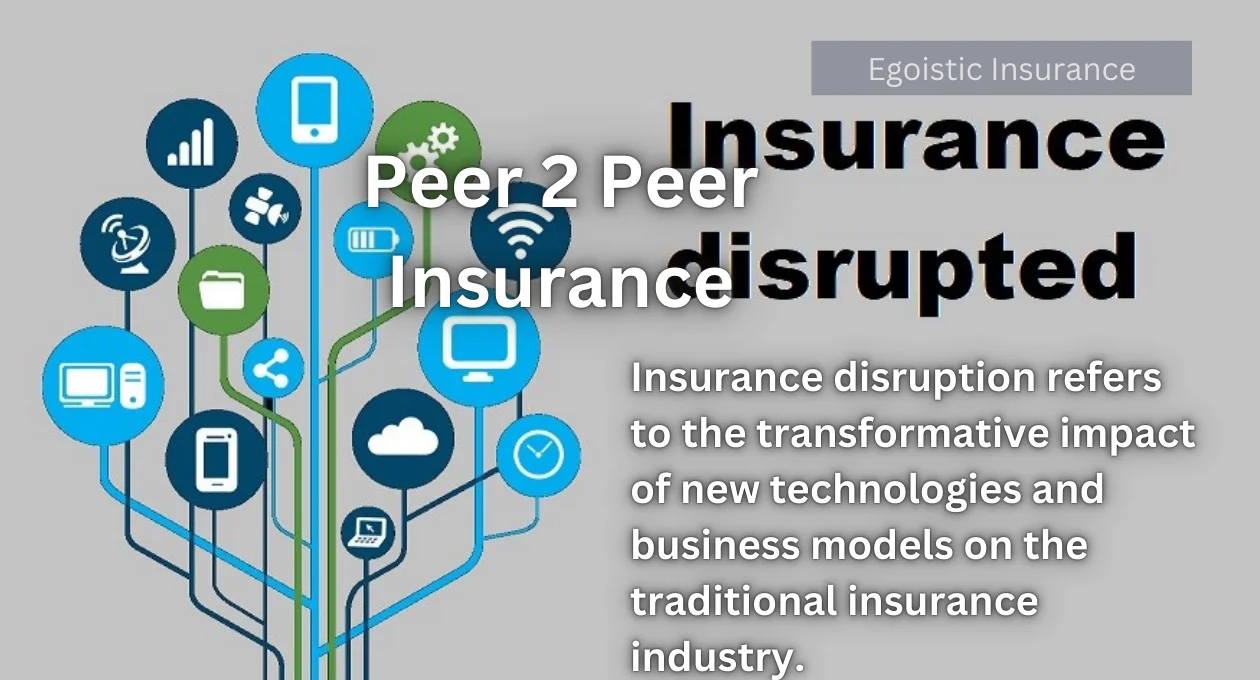
Insurance disruption refers to the transformative impact of new technologies and business models on the traditional insurance industry. It is a key driver of this disruption, challenging established norms and introducing innovative approaches to risk management.
The shift towards and decentralized models is reshaping the landscape of risk management. By leveraging technology and fostering community engagement, these innovative approaches create a more inclusive and responsive system. Participants benefit from tailored solutions that align with their needs while promoting accountability and trust. As the industry adapts, it is likely that traditional insurers will also evolve to meet the demands of a more connected and empowered consumer base.
Alternative Insurance Models
These models often prioritize transparency, affordability, and user-centricity, offering a refreshing departure from conventional products.
As alternative models gain traction, stakeholders are encouraged to explore the potential of integrating technology with community-driven solutions. This combination enables a more transparent approach to risk management and empowers individuals to take charge of their coverage. The emphasis on collaboration and shared resources can lead to innovative insurance products that are more aligned with contemporary needs. Ultimately, these shifts may forge stronger relationships between insurers and policyholders, fostering a sense of partnership in the quest for effective risk management.
FAQs
What is P2P?
Peer-to-Peer refers to a model where individuals come together to pool their resources and share risks. This collaborative approach allows members to support each other in instances of loss or claims.
How does decentralized insurance work?
Decentralized utilizes blockchain technology and smart contracts to manage insurance policies and claims without a central authority. This results in increased transparency, lower fees, and faster claims processing, giving policyholders more control and autonomy over their experience.
What are social insurance platforms?
Social insurance platforms are digital solutions that leverage social networks to create and manage insurance products. These platforms facilitate the formation of groups based on trust and shared interests, allowing users to engage in collaborative decision-making about their needs.
What is the role of a peer insurance group?
A peer insurance group is a self-managed collective of individuals who share similar risks. Members collaboratively manage resources and claims, fostering a sense of ownership and accountability, while using digital tools to streamline.
How are alternative models changing the industry?
Alternative insurance models challenge traditional practices by prioritizing transparency, user-centric solutions, and community engagement. These innovations empower individuals and create a more inclusive insurance landscape that adaptively addresses the needs of modern consumers.
Conclusion
Peer-to-Peer is reshaping the landscape of the insurance industry. By leveraging technology, social networks, and innovative models offers a compelling alternative to traditional insurance. As insurtech continues to evolve, we can expect even more advancements that will further democratize and improve access to insurance for everyone.
The emergence of alternative insurance models and decentralized insurance, marks a significant shift in how risks are managed and shared among individuals. These models not only enhance transparency but also foster a sense of community and collaboration. By prioritizing user engagement and responsiveness to member needs, they create a more inclusive insurance ecosystem. As these trends continue to grow, stakeholders will need to adapt and innovate to stay relevant in an ever-evolving market.
For more interesting information keep visiting egoisticinsurance.online


